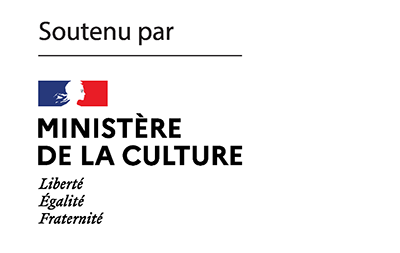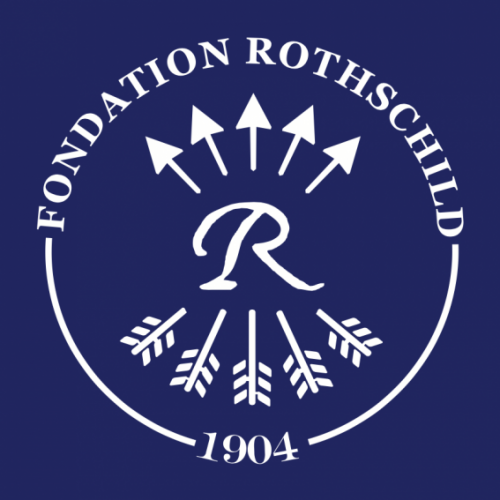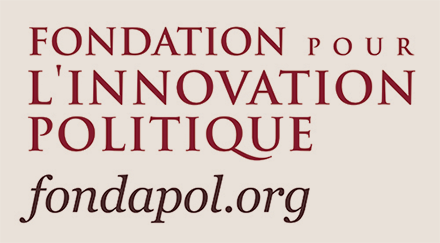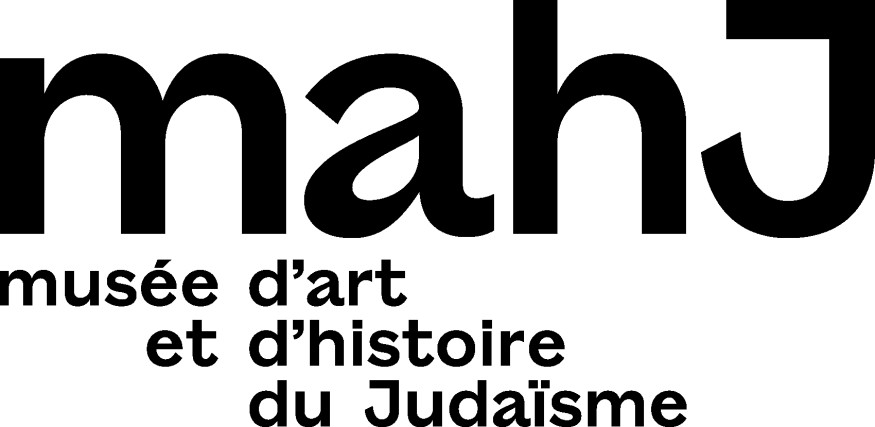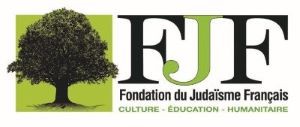This year marks the centenary of the death of Vladimir Medem (1879-1923), a great theoretician of the Bund and the Jewish national question in the Russian Empire, considered in connection with socialist internationalism. Vladimir Medem was renowned for his writing and political activities. Constance Pâris de Bollardière discusses the singularity of his personal journey. Medem’s memoir, published in New York in 1923, will form the fabric of this evocation.
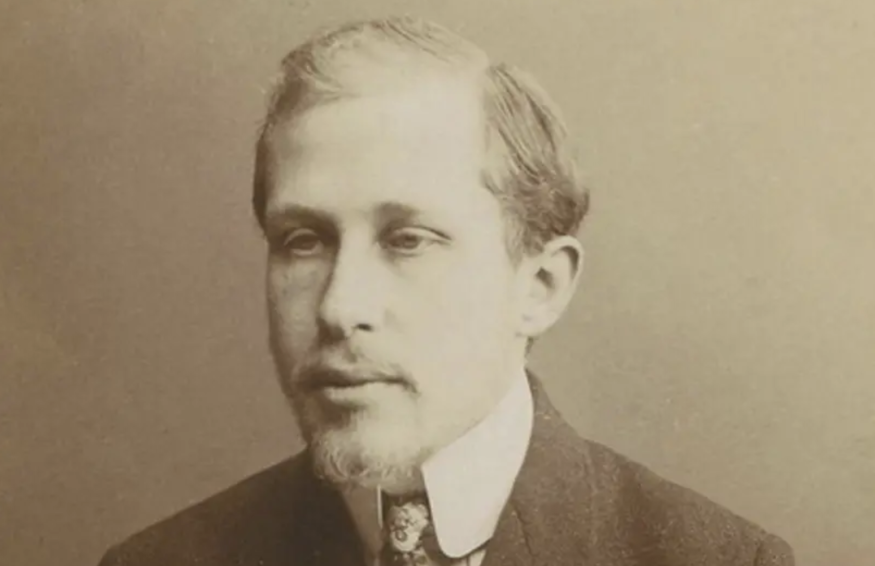
Vladimir Medem was born in 1879 in the city of Liepaja (Libau), in present-day Latvia, but spent his childhood and youth in the city of Minsk, where his family was originally from. His parents and siblings were late converts to Lutheranism, Vladimir alone being baptized into the Russian Orthodox Church. His father, an officer, and a doctor in the Russian army was not a practicing physician, however, and would have converted only to avoid losing his rank. The young Medem grew up in a Russian culture devoid of Judaism. In contrast to his family, which was distant from religious practice, he developed a very deep Christian faith as a child, which he would describe in retrospect as “fanatical” and “blind” (p. 12).
These details of his childhood are known to us from the memoir he wrote shortly before his death, which occurred in New York in the year he turned 44. Initially published in the famous New York Yiddish daily Forverts, his memories were released in New York in book form in the year of his death under the title Fun mayn lebn (My Life). The first lines of his memoir immediately project us into the rejection of his Jewishness during his childhood, an attitude that manifests itself most notably when he captures his mother speaking Yiddish:
“Really, how could something like this be possible! A cultured and intelligent lady, the wife of a Russian ‘general’ no less, speaking in zhargon! Truly scandalous! I could scarcely wait for my father to get home. I knew this sort of thing would not happen in his presence. His footsteps were, in fact, soon audible; and Leyke hastily disappeared into the kitchen. I breathed a deep sigh of relief: the house had once again become genuinely Russian”. (p. 19).
This first chapter attests to the shame of the Medem family with regard to its Jewish past, characteristic of a stratum of the Russified Jewish bourgeoisie:
“This psychology of shame over Jewishness, and secrecy about Jewish origins, was highly characteristic of our whole milieu. […] And I remember how I was deeply permeated by it even while still a youngster. I bore my Jewish origins like a heavy burden. It was shameful to me, a humiliation, a kind of secret disease; nobody must know about it. And if people happened to know of it, they should (if they were really decent and friendly individuals) feign ignorance, like someone pretending to be unaware of a hunchback or of a lame leg so as not to cause cripple anguish. […] And I didn’t want to be a Jew; and I did not consider myself a Jew. And I used to parrot what I heard from the adults: ‘We are Russians’ ”.(pp. 3-4).
Although Yiddish was the object of his childhood shame, in his adult life it became one of the pillars of his political thought, and it is in this same language that, nearly forty years later, he returns to the different stages of his life in Fun mayn lebn. According to him, his approach to the Jewish world took place “imperceptibly” over the years, first through reading and friendships, then much more distinctly through his political activism. After graduating from Minsk High School, Vladimir Medem began studying medicine and law at the University of Kiev in the late 1890s. In this context, he soon became involved in Russian socialist circles. In 1899, his active participation in a long student strike led to his expulsion from the university and his first imprisonment. He was transferred back to Minsk under police surveillance in the same year.
This transfer back to his hometown leads to a much deeper return. In Minsk, Medem becomes a “confirmed Marxist” and “by a strange coincidence, another interest and sentiment grew stronger [within himself] just around that time: the nostalgia for Jewishness” (p. 129). He became a full-time militant in the Bund, founded not long ago in 1897 in the nearby city of Vilnius (Vilne), in order to organize the Jewish proletariat of the Russian Empire, which was made of Yiddish-speakers who were excluded from large-scale mechanized industry and were victims of anti-Semitism, and thus faced specific problems that set it apart from the Russian proletariat. On his return from Kiev, Bundist militants were already present in Minsk, at a time when the Russian Social Democratic Workers’ Party (RSDRP), which had just been founded in 1898 in that same city, was, as Medem recalls, much less developed and organized there than the Jewish Party. Medem dates his membership in the underground circles of the Bund to May 1900. A few months later, he joined its local executive committee, which charged him with creating and maintaining links between the Jewish working masses and the party’s leaders. It was within these first Bund circles that he became familiar with Jewish life and began to learn Yiddish.
Medem was already convinced “that the Jewish workers’ movement is an established fact and that there cannot be two opinions about it”. In 1900, however, the Bund had not yet structured its position in the debates, still in the making, on the national question. Responding to problems specifically facing Jews in the Russian Empire, including anti-Semitism, did not yet go hand in hand with claiming collective rights for the Jewish nation. Yiddish, the vernacular language of the Jewish masses in the Pale of settlement, was used to address them but did not yet form the core of Bundist national politics. Similarly, although Medem now defined himself as a Jew, he recalled in his memoir that in 1901, the year in which he was arrested and imprisoned a second time, he still believed that:
“The Yiddish language should actually be used only when it was truly necessary, at a mass-meeting, even at the razborka[1]; in short, wherever persons were encountered who spoke no Russian. But to speak Yiddish at a meeting of the Committee simply as a matter of principle, as a demonstration – I didn’t consider this correct”. (pp. 176-177)

That same year, 1901, at the Fourth Bund Congress, the Jewish socialist party voted for the first time to adopt in principle the idea of national cultural autonomy, i.e., a non-territorial governing body that would be responsible for the self-administration of their cultural affairs (including education in Yiddish), without making any territorial claims. The young Medem, who did not yet participate in the Bund congresses, was nonetheless marked by the emergence of this national thinking, in which he began to take an interest when he headed into exile following his arrest.
Beyond the first chapters devoted to his childhood, his return to Jewishness and the development of his socialist activity, Fun mayn lebn is essentially devoted to his years of political maturation in exile between 1901 and 1913, during which he assiduously frequented circles of Russian and European socialist leaders and intellectuals. He regularly traveled to other European cities to attend meetings and congresses of the Bund, the RSDRP, the Zionist Movement and the Socialist International, spending all his time on politics and more particularly on writing articles for the Bund press (often using pseudonyms such as Michael Vinitski). During these years, he visited cities such as Geneva, Basel, Zurich, Bern, Amsterdam, London, Brussels, Lemberg, Munich, Vienna, Stockholm, Kotka, Imatra, and Copenhagen, not to mention his vacation destinations and trips to Russia. Of his European travels, Medem recalls exchanges and debates with socialists from numerous countries, many of them exiles from the Tsarist Empire, stemming from various factions and representing different nationalities, in particular Russians, Poles, Latvians, and Jews. Among the latter were also revolutionary socialists (members of the SR party) or Zionists of various persuasions. In his memoir, Medem evokes the entire European political constellation of the first quarter of the twentieth century, such as: the Russian revolutionary socialist Grigorii Gershuni; the Russian social democrats Gueorgui Plekhanov and Leon Trotsky; the Jewish revolutionary socialist, writer and ethnographer the revolutionary socialist, territorialist and later socialist Zionist and great defender of the Jewish national cause and Yiddish culture Chaim Zhitlovsky; the German social democrat of Polish Jewish origin Rosa Luxemburg; the French anarchist Sébastien Faure; the Austro-Marxist Otto Bauer; or the French socialist Jean Jaurès. Not to mention numerous Bundist cadres.
During the first years of the 20th century, which correspond to his first Swiss exile (between 1901 and 1905, in Bern and then in Geneva), Medem elaborated his political thought along the lines of the Bund Congress of 1901.
“Distance occasionally lends perspective. Distance occasionally augments strength of feeling. Thus, it was only amidst the Swiss mountains, thousands of versts from the Jewish ‘workers’ street’, that the image of the Bund loomed before me in all its grandeur and beauty”. (p. 235)
The most intense Bundist debates on the national question took place in 1903 at the Fifth Bundist Congress in Zurich. Faced with the more “internationalist” Bundists and the advocates of a national policy, Medem, who was 23 years old, presented his own perspective by defending the “neutralist” position that he had been maturing for several years and whose intellectual development he described as follows in his memoir:
“With respect to the struggle being waged in the Jewish bourgeois press between nationalism and assimilation, I believed both sides were wrong, that both were wanting from a socialist standpoint. Socialism had to rise above both positions. Socialist thought had to employ other concepts altogether; it had to utilize a wholly different yardstick in measuring phenomena. I used to become angry listening to the argument of nationalists: ‘Whoever is not with us in an assimilationist’ and to the argument of the assimilationists: ‘Whoever is not with us is a nationalist.’ There must be, I thought, still a third ground, not simply a kind of middle-ground between the two, involving a bit of sampling from the one and a bit from the other; there must be, indeed, a fully independent third area, above the other two, clearly situated on a different level of social thought and feeling. And that third position began to take shape in my mind at this time. But I was still completely unable to formulate it clearly and distinctly on paper”. (pp. 263-264).
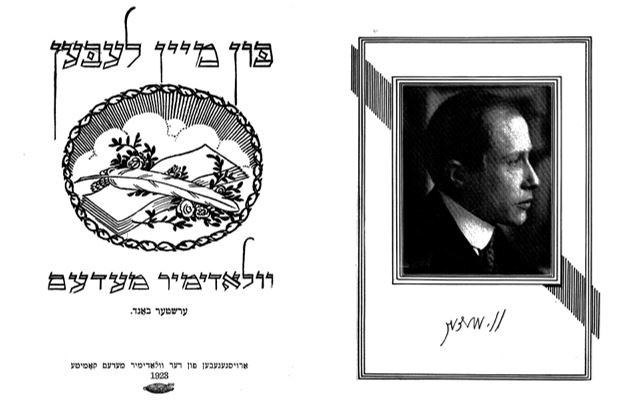
While his 1903 speech has not been preserved and Fun mayn lebn does not present its theoretical details, the proceedings of the Congress have been preserved. In his most influential writing, Social Democracy and the National Question, published a year later in Russian in Geneva in the daily Vestnik Bunda (Bund Messenger) and then in Yiddish in Vilna in 1906, Medem once again clearly sets out his position, as developed in continuity with the 1903 congress. The historian Roni Gechtman, who studied Medem’s “neutralism” and its reception in those years, explains that the young Bundist deplored the weakness of Marxist analyses on the national question, considering that the latter could be treated in socialist terms, reflecting “the true interests of the working class” and exhibiting an internationalist character without questioning the primacy of the class struggle[2]. In contrast to the nation-state models promoted by nationalist movements, Medem advocates a “State of nationalities”, in which the protection of national minorities and their cultural autonomy would be guaranteed. Such states would also leave members of the minority culture free to choose whether to assimilate or to preserve their own culture. This is the meaning of Medem’s neutralism: while decrying nationalism, he considers that the long-term persistence of the Jewish nation of Yiddish culture remains an open question, to be determined by historical factors. Still, according to Gechtman, Medem nevertheless predicts the likelihood of the persistence of the Jewish nation after the advent of socialism and identifies the struggle against the oppression of minorities and their forced assimilation as an essential issue.
The 1903 Bund Congress failed to reach a compromise on the national question, but Medem made a strong impression on the party leadership and, the same year, joined the Bund delegation to the Second Congress of the RSDRP. This congress, which is still famous for having confirmed the division between Bolsheviks and Mensheviks, also led to the separation of the Bund from the Russian party. The Bund could not compromise on its autonomous representation of the Jewish proletariat, which constituted its raison d’être, while the RSDRP refused to do so[3].
*
The Bundist synthesis of socialism, internationalism, and national cultural rights of Jews of Yiddish culture stood out in socialist circles at the beginning of the twentieth century, in which, as the historian Jean-Numa Ducange recently documented in Quand la gauche pensait la nation : nationalités et socialismes à la Belle-Époque, “the debate” on the national question “raged on”. In The Jewish Question: History of a Marxist Debate, the historian Enzo Traverso explains that Marxist culture in Western and Central Europe, but also within the Russian Empire, was still at that time trapped in an interpretation of Jewish history, inherited to a large extent from the Enlightenment, which identified emancipation and assimilation, and could only conceive of the end of Jewish oppression in terms of the overcoming of Hebrew otherness. Jewish assimilation is seen as the inevitable and desirable outcome of the path of history. However, in contrast to the Jews of Western and Central Europe, who had experienced emancipation, the Jews of the Tsarist Empire at the turn of the 20th century remained deprived of civil rights, while also enduring anti-Semitism and pogroms. In this context, economic, cultural, and social modernization disrupted the traditional Jewish world without leading to assimilation, except in some restricted circles of the intelligentsia. The struggle for emancipation therefore tended to be confused with a national consciousness, thought of in connection with the internationalism of the socialist movement.
Among the strongest opponents of Bund policy was Bolshevik leader Lenin, who violently opposed demands for Jewish national cultural autonomy (as well as those of other nations) as ‘nationalistic’, ‘separatist’ and ‘segregationist’. Lenin also rejected the corollary project of organizing the RSDRP, a single, centralized Russian party, into a federation of national structures. Finally, as he considered that a nation must possess a territory, Lenin invalidated the Bundist conception of a Jewish nation articulated around the Yiddish language and culture[4].
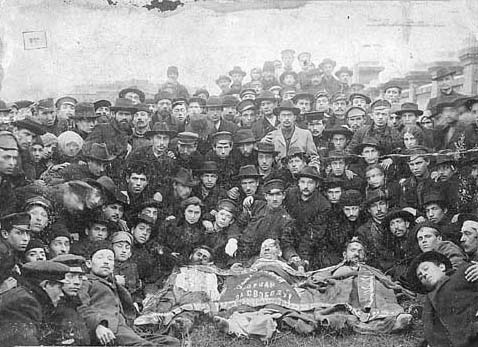
Lenin’s attacks were frequent in the years preceding the 1917 revolutions. If, according to Roni Gechtman, the Bund did not respond to Lenin’s numerous offensives in the press, Medem nevertheless revisits these incidents in Fun mayn lebn, whose strongest criticisms relate to the Bolshevik leader:
“Lenin is a man of iron. He has the ability to rule as well as the desire to rule. He knows what he wants. And when he wants something, he goes after it. He stops at nothing. When he wishes to carry out a decision and finds himself in the minority, he is very little fazed. He hits upon what to do, hurls himself upon his opponents with unrestrained fury, and pulls the crowd over to this side. Now he has his majority. […] One way or another, his will prevails. And in this sense, Lenin is really a born dictator”. (p. 228).
Fun mayn lebn, on the other hand, devotes few lines to Zionism, a project to which the Bund and its diasporic policy is categorically opposed. Reading the memoir of Medem, we learn that he attended several Zionist Congresses, even though he was feeling very distant from this cause:
“My feeling in the matter of Judaism was always, as a Zionist might express it, goles gefil [diaspora sentiment]. The palms and vineyards of Palestine were always, and have remained, alien to me”. (p. 179).
The Marxist component of Zionism, carried by the founder of Poale Zion and defender of Yiddish Ber Borokhov, is only slightly mentioned. The political and existential debates that animate the Jewish world with such ardor occupy a much less central place in his text than the question of the integration of the Bund and the Jewish nation of Yiddish culture within the social democracy in Russia or the strategies to be pursued in the political context of the Empire:
“The Iskrists[5](like the majority of Russian Social Democrats in general) had an extraordinarily feeble conception of the National Question. Totally unconcerned about it, they contended that it was a bourgeois matter altogether. But with respect to the Jews in particular, they had within their ranks a sufficient number of Jewish comrades whose inclinations were thoroughly assimilationist and who constituted the most embittered opponents of the Jewish national idea. The Jews weren’t a nation; the Yiddish language was an ugly “jargon”; etc., etc. And by daring to advance national demands, the Bund was merely offering further evidence of its nationalism and chauvinism. Thus was initiated an unrelenting assault. What’s more, the Bund demands had been poorly and incorrectly understood, and still worse were more incorrectly interpreted; and an atmosphere was generated marked by burning hostility and passionate polemicizing. The struggle continued for years and led to a situation in which the Bund was literally thrust out of the party in 1903. But the Iskrists failed to garner the hoped-for success. On the contrary, the ‘Bund idea’ emerged from this particular struggle with enhanced clarity and greater force”. (p. 234).
Other leading figures of the time are not mentioned at all, such as the historian and advocate of national cultural autonomy Simon Dubnov, who was not a Marxist and whose conception of a spiritual Jewish nation went beyond the framework of Yiddishkeyt, which was the one of the Bund. The international conference held in Czernowitz in 1908, which was the setting for fierce debates about the languages of the Jewish people and in particular Hebrew and Yiddish (it ended with a compromise on the recognition of Yiddish as ONE of the national languages of the Jewish people and not THE language as some people contended), and where the Bund was underrepresented, is not mentioned either. The book includes several pages on Medem’s sensitivity to the beauty of the Swiss mountains, his taste for Viennese cafés, and Russian literature. Such frequent passages may lead one to question the literary genre of this book, which some Yiddish authors label “an autobiography”, while English-speaking historians are calling it “a memoir”. His marriage and family life in adulthood, on the other hand, are barely mentioned.
From Geneva, Medem observes the beginnings of the Russian Revolution of 1905, in which the Bund takes part. The disappointments of the revolution weaken the party, which loses many militants, of which a certain number emigrate, notably to America. In the context of this revolutionary loss of momentum and the wave of pogroms that rage between 1903 (the year of the Kishinev pogrom) and 1906, the Bund reinforces its national approach and its defense of Yiddish. It was at this time, between 1905 and 1908, that Medem returns to Russia for the first time. During this clandestine stay in the cities of Vilna and Kovno, he carries on his work as a lecturer and editor for the Bundist press. In 1908, threatened by political repression, he settles again in Geneva and then in Vienna between 1912 and 1913. This second period of European exile ends with a second Russian comeback, on the eve of the First World War, which is immediately transformed into a two-year period in prison, between Kovno, Orel, Smolensk and Warsaw, period of detention that Medem describes in the last chapters of his memoir. While this imprisonment is supposed to lead to detention in Siberian prisons, he is finally freed by the arrival of the German army, in August 1915, in Warsaw.

Disappointingly, his text stops short of his experience of the Russian revolutions of February and October 1917, the beginnings of independent Poland – where the Bund is able to continue its activity as a legal political party –, and then his move to the United States in late 1920. Feeling that he does not have sufficient hindsight to address these events, Medem concludes his memoir on his liberation in 1915. He dies shortly afterward, of an illness, in New York, on January 9, 1923. We know, however, that Medem was opposed to the policy imposed by the Bolsheviks, which he describes as a dictatorship, and that he was concerned about both the rise of a pro-communist tendency in the ranks of the Bund and the emergence of nationalism within the Social Democracy. His support for the development of Yiddish culture never weakened in the slightest.
*
In interwar Poland, national cultural autonomy is one of the pillars of the Bund’s program, which creates several large socio-cultural institutions. Although Medem’s concept of neutralism is rejected after 1910, his articles on the subject continue to be published by the party. A book in his honor is thus published in New York in 1943, on the 20th anniversary of his death, under the title Vladimir Medem. Tsum tsvantsikstn yortsayt; it includes again in Yiddish this “little known” “seminal work”, whose contribution to national thought is “invaluable”. In its lengthy preface on the subject of Medem’s neutralism, the editorial board nevertheless takes care to situate this concept in the context of the period in which it was elaborated, that is at the beginning of the theoretical development of Jewish socialism. The preface points out that the neutralism advanced by “the 25-year-old Medem” was not ultimately retained by the Bund, and that “the more mature Medem” himself rethought this concept, which did not prevent his opponents from instrumentalizing such neutralism in order to accuse the Bund of indifference to the fate of the Jewish nation. The same book contains other reprints in Yiddish of texts, written by Medem in the years 1911-1919, dealing with the Jewish national question in Russia, Lenin’s theory and politics, Zionism, Yiddish language and culture, his experience in prison in 1913-1915, and the celebration of the Bund’s 22nd anniversary. A partial bibliography of his publications concludes the book.
In addition to these documents, five Bundist leaders, including four prominent figures who fled to the United States following the German invasion of Poland, each reflect on a particular aspect of Vladimir Medem’s political career. Bundist educator Shloyme Kazdan, who was one of the pillars of the Tsysho Yiddish school network in Poland, recalls in his contribution Medem’s considerable efforts to promote Yiddish socialist schools, whose language represented for him “the real vital concerns” of the Jewish masses, and which he learned and mastered perfectly over the years. Many Yiddish schools in the interwar period were named after him, both in independent Poland and in countries of immigration. His memory was also honored at the Medem sanatorium in the town of Miedzeszyn, one of the Bund’s flagship institutions in interwar Poland, famous for its avant-garde pedagogy and whose pictures can be seen in Aleksander Ford’s 1936 film Mir kumen on [We are coming]. On August 22, 1942, the children and staff of the sanatorium were deported to the Treblinka killing center.
Written in April 1943, when most European Jews in the Yiddishland had already been murdered during the Holocaust, the preface to the book published for the 20th anniversary of his death ends with the “lights of Medem’s spiritual legacy” which, still finding their way through the “thick veil” of “the bloodiest storm in history”, demonstrate more clearly what this man meant for the Bund, for Jewish socialist thinking, and for the Jewish labor movement. Today in Paris, two Jewish associations of Yiddish culture bear his name. The Centre Medem – Arbeter Ring, “a Jewish, secular, diasporic organization rooted in the socialist movement and attached to Yiddish culture”, “claims the spiritual heritage of the Bund”[6]. A series of conferences in homage to Vladimir Medem, inaugurated on January 9, will be held there throughout the year 2023[7]. “In a spirit of secularism and openness”, the Maison de la Culture Yiddish – Bibliothèque Medem aims “to encourage the preservation of heritage, to disseminate Yiddish culture in France and in Europe, to promote Yiddish as a language of culture, and to foster its knowledge among people from all walks of life”[8]. On January 7, a conference in its premises paid tribute to the Bundist theorist[9].
Beyond these Jewish associations, the name of Medem, whose tombstone reads “the legend of the Jewish labor movement,” remains little known. According to historian Samuel A. Portnoy in the introduction to his translation of Fun mayn lebn into English, Medem was also unknown in the 1970s in circles of scholars of the Russian revolutionary movement. In recent years, we have met people wondering which words Medem was an acronym for. Medem’s analysis of the national question, which was a classic in the Bund, does not seem to have been translated into any language other than Yiddish. It remains much less well known than the work of Medem’s contemporary, the Austro-Marxist Otto Bauer, The Question of Nationalities and Social Democracy, published in German in Vienna in 1907 and translated into several languages including French. In this famous text, Otto Bauer also advocates national-cultural autonomy and the deterritorialization of the national question, here in the case of the nations of Austria-Hungary, a framework in which he predicts the long-term assimilation of Jews into other cultures. According to historians Gertrud Pickhan and Roni Gechtman, Medem was no less “multiculturalis[t] avant la lettre” than the Austro-Marxists Otto Bauer and Karl Renner. Rechtman also suggests that “these analyses have more than historical significance since the problems Renner, Bauer, and Medem addressed […] continue to beset the increasingly diverse societies of our own time”[10].
Unlike Medem’s book on the national question, Fun mayn lebn has been translated into several languages, including English, French, Hebrew, Russian, and Spanish. We commend it to anyone interested in the singular journey of this man as well as in the Bund, Jews of Yiddish culture, Russian and European social democracy at the turn of the 20th century, and minority rights.
Constance Pâris de Bollardière
PhD in History, École des hautes études en sciences sociales, Assistant Director of the George and Irina Schaeffer Center for the Study of Genocide, Human Rights and Conflict Prevention at The American University of Paris.
Translated from French by Bernard Dov Belz
Notes
| 1 | Name given in Minsk to the central body gathering various Bundist groups. |
| 2 | Roni Gechtman, “National-Cultural Autonomy and ‘Neutralism’: Vladimir Medem’s Marxist Analysis of the National Question, 1903-1910,” Socialist Studies, 3/1, 2007, pp. 69-92. |
| 3 | In 1906, the Bund reintegrated the RSDRP. This did not, however, put an end to the deep disagreements between Bolsheviks and Bundists on the national question, which became even more acute in the years 1912-1914. |
| 4 | Roni Gechtman, “A ‘museum of bad taste’? The Jewish Labour Bund and the Bolshevik position regarding the national question, 1903-14”, Canadian Journal of History, 43/1, 2008, pp. 31-67. |
| 5 | This term designates the readers of the newspaper Iskra [Spark], the organ of the RSDRP as created at the end of 1900 and edited until 1903 by Lenin and his close collaborators. |
| 6 | centre-medem.org/presentation/ |
| 7 | centre-medem.org/EVT/vladimir-medem-30-juillet-1879-9-janvier-1923/ |
| 8 | yiddishweb.com/institution-2/ |
| 9 | programme.yiddish.paris/?tribe_events=la-bibliotheque-medem-ouvre-ses-portes-vladimir-medem-en-francais-en-presentiel |
| 10 | Gechtman, “ National-Cultural Autonomy and ‘Neutralism’ “, p. 71. |



